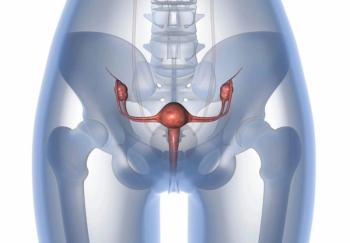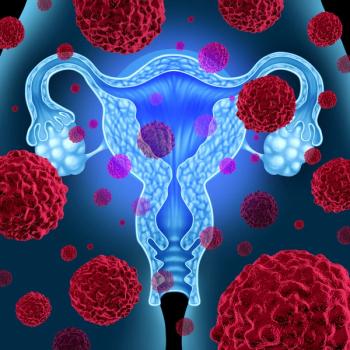
According to Maurie Markman, MD, patient-reported outcomes pertain to more relevant questions surrounding the impact of therapy for patients.

Your AI-Trained Oncology Knowledge Connection!


According to Maurie Markman, MD, patient-reported outcomes pertain to more relevant questions surrounding the impact of therapy for patients.

The risk of progression was reduced with the use of durvalumab/CRT for advanced cervical cancer, according to an exploratory ctDNA analysis.

Investigators of the OVATION-2 trial assessed IMNN-001, a novel IL-2 gene therapy, in patients with newly diagnosed epithelial ovarian cancer.

For patients with unresectable vulvar cancer, an improved ORR was observed with pembrolizumab plus cisplatin and RT followed by maintenance pembrolizumab.

Future findings from a translational analysis of the OVATION-2 trial may corroborate prior clinical data with IMNN-001 in advanced ovarian cancer.

Data from the ROSELLA trial may support relacorilant plus nab-paclitaxel as a new standard in this ovarian cancer population.

Data from KEYNOTE-A18 support pembrolizumab plus concurrent chemoradiotherapy as a standard of care in this cervical cancer population.

The median PFS with dostarlimab plus niraparib was 20.6 months vs 19.2 months with niraparib alone in patients with treatment-naive advanced ovarian cancer.

Experts highlight research at the 2025 ASCO Annual Meeting that may move the needle in gynecologic cancers, hematologic malignancies, and other fields.

Data support subcutaneous envafolimab plus lenvatinib as a promising new therapy option in advanced endometrial cancer.

There was no benefit derived from adding atezolizumab to chemotherapy and bevacizumab in patients with recurrent ovarian cancer.

A survival benefit was observed when nivolumab and ipilimumab were combined to treat ovarian or gynecologic clear cell carcinoma.

The CARACO study shows that adding retroperitoneal lymphadenectomy to cytoreductive surgery did not improve survival in advanced ovarian cancer.

Findings may support reconsideration of guideline recommendations concerning the use of estrogen alone in postmenopausal individuals.

Interim data reveal favorable responses in patients with low-grade serous ovarian cancer treated with avutometinib plus defactinib, according to Susana N. Banerjee, MD.

Findings from the phase 3 MIRASOL trial support mirvetuximab soravtansine as a standard treatment option for platinum-resistant ovarian cancer, according to Ritu Salani, MD.

Trastuzumab deruxtecan appears to elicit ‘impressive’ responses among patients with HER2-positive gynecologic cancers regardless of immunohistochemistry in the phase 2 DESTINY-PanTumor02 trial.

Ritu Salani, MD, highlights the possible benefit of a novel targeted therapy and autologous tumor vaccine in patients with platinum-resistant ovarian cancer, and in the maintenance setting after treatment for platinum-sensitive disease.

In addition to potentially moving mirvetuximab into earlier lines of treatment for those with platinum-sensitive ovarian cancer, Ritu Salani, MD, also discusses combining the agent with carboplatin to decrease toxicities and improve quality of life.

Treatment with mirvetuximab soravtansine appears to produce a 3-fold improvement in objective response rate vs chemotherapy among patients with folate receptor-α–expressing, platinum-resistant ovarian cancer in the phase 3 MIRASOL trial.

Ritu Salani, MD, details the health-related quality of life benefits associated with dostarlimab in the treatment of advanced endometrial cancer, which includes improvements in back and pelvic pain.

Ritu Salani, MD, describes the concordance between blinded independent central review and provider-assessed outcomes with dostarlimab among patients with advanced recurrent endometrial cancer in the phase 3 RUBY trial.

PRGN-3005 autologous UltraCAR-T cells appear well-tolerated and decreases tumor burden in a population of patients with advanced platinum-resistant ovarian cancer.

Avutometinib plus defactinib produces no new safety signals among those with low-grade serous ovarian cancer in the phase 2 RAMP 201 trial.

The antitumor activity of niraparib maintenance therapy in patients with advanced ovarian cancer remains unclear among those with measurable residual disease at baseline in the phase 3 PRIME study.

Maintenance with niraparib also produces benefits in chemotherapy-free interval and time to first and second therapy among those with BRCA wild-type recurrent ovarian cancer in the phase 3 NOVA study.

Health-related quality of life data support dostarlimab plus chemotherapy as a standard of care in primary advanced or recurrent endometrial cancer, according to an expert from Copenhagen University Hospital in Denmark.

Patients with folate receptor alpha (FRα)–high, platinum-resistant ovarian cancer experienced progression-free survival benefit following treatment with mirvetuximab soravtansine-gynx.

Dostarlimab produces a survival benefit vs placebo in combination with standard of care therapy regardless of whether patients had mismatch repair deficient/microsatellite instability-high disease.

Maintenance bevacizumab plus durvalumab and olaparib appears to produce a progression-free survival benefit among those with HRD-negative advanced ovarian cancer in the phase 3 DUO-O trial.